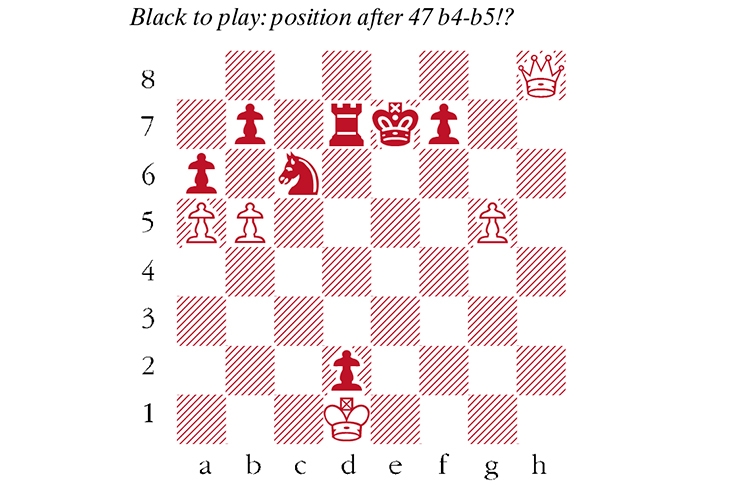It is nigh on seven months since I sat opposite a flesh and blood opponent, so I expected to feel unusual playing my first games in the Schachbundesliga, Germany’s team competition. I had no special concern on grounds of health. German case numbers look (relatively) low, the playing hall was cavernous, to facilitate social distancing, and the organisation was slick. Rather, I feared that the trappings of Covid might tarnish the atmosphere. There was talk of mass testing before the event began. Plexiglass screens divided the board, and players wore masks as they paced around. Handshakes were out, hand sanitiser was in — tiny bottles wherever you looked. There was no coffee. No coffee! What gritty reportage might one dispatch from this brave new world?
Nothing of the sort. Once the battle started, the other distractions faded away. I had forgotten what an immersive experience it is to play chess. It was the same old game, and it was wonderful. Every player I spoke to seemed to share the same enthusiasm.
Sixteen teams compete in the traditional Bundesliga, but the 2019/20 season will resume in spring 2021. This was a separate event, held in Karlsruhe, near Frankfurt, which saw eight of those teams fighting for an ad-hoc 2020 Bundesliga Championship. My own team, Werder Bremen, finished a respectable fourth, my own contribution being seven draws (not for want of excitement, I am pleased to add).
The team from Baden Baden usually dominates the league, and in Karlsruhe they fielded the likes of Caruana, Vachier-Lagrave and Aronian, making this undoubtedly the strongest over-the-board event since the onset of lockdown. But their best performer was England’s Michael Adams, who began with five consecutive wins. He secured the title for Baden Baden with a crucial draw in the final match against the team from Viernheim, who finished second.
I was fascinated by the volley of tactics that occurred in this endgame. Mamedyarov has queen for rook, knight and pawn, but his king is tied down by the passed pawn on d2. He has
just tried the ingenious 47 b4-b5!?, trying to detonate the queenside.
Shakhriyar Mamedyarov (Viernheim)–Erwin L’Ami (Solingen)
Bundesliga, September 2020
47… Nxa5 A very tough decision. 47… axb5 loses the knight, but after 48 Qf6+ Ke8 49 a6! bxa6 50 Qxc6 the endgame database shows that, even without the pawns on a6 and b5, Black has a draw. White can’t engineer a zugzwang, so the Kd1 will never get out. Still, I can understand why L’Ami had doubts about this. 48 bxa6 Nc4 Setting up ideas of Ne3+ or Nb2+, so both sides must tread carefully. 49 Qf6+ Ke8 50 Qc3 Guarding the knight checks. b5? Surprisingly, securing the knight is a mistake. Instead 50… bxa6 51 Qxc4 is drawn as before 51 g6! A brilliant stroke. f6! Excellent defence. The first point of 51 g6! is that 51… fxg6 52 a7! Rxa7 53 Qh8+ Kd7 54 Qg7+ wins the rook. The second is that 51… Re7 52 Qh8+ Kd7 53 Qd4+ Ke8 (53… Kc6 54 Qf6+! Re6 55 Qxe6+ fxe6 56 g7) 54 a7 wins, e.g. Re1+ 55 Kc2 Rc1+ 56 Kb3 d1=Q+ 57 Qxd1 Rxd1 58 a8=Q+ Ke7 59 g7 etc. 52 a7! Deflecting the rook, so the d2-pawn loses protection. Rxa7 53 Qxf6 Re7! Threatening Re7-e1+. 54 Qh8+? 54 Qc6+! wins in a beautiful way: 54…Kf8 Qc5! or 54… Kd8 55 Qd5+ Kc7 56 Qc5+ Kd8 57 Qg5! In either case, if Black breaks the pin with …Ke8, White has Qxb5+. 54… Kd7 55 Qh3+ Kd8 56 Qh4 Ke8 57 Qh8+ Draw agreed






Comments